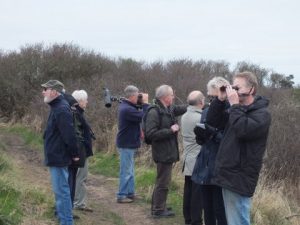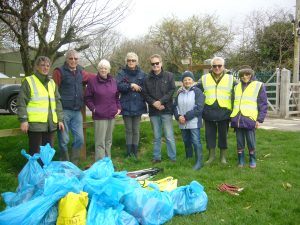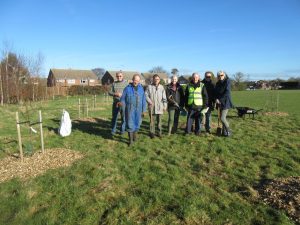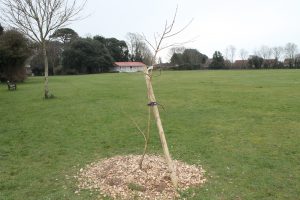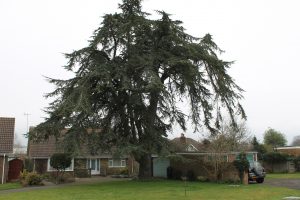Penny Green, an Ecologist from the Knepp Estate near Horsham, opened our March meeting with a talk entitled ‘Knepp Wildland – A Naturalistic Grazing System’. Penny explained that the Knepp Castle Estate has been privately owned by the Burrell family for over 200 years. The current owner, Sir Charles Burrell, was devoted to traditional arable and dairy farming but with heavy clay soil and small fields the land was not ideally suited for intensive agriculture. In 2001 Sir Charles shifted his focus to regeneration and restoration projects aimed at nature conservation. Sir Charles introduced various herbivores, cows, deer, horses and pigs on to the 3,500 acres of land. Over time this affected the vegetation to create mosaics of habitats including open grassland, regenerating scrub, bare ground and forested groves. Longhorn cattle create paths through scrub, spread seeds and create a distinct browse line, while the Tamworth Pigs rootle up the ground looking for food. Exmoor ponies and deer browse the sallow and other tree species also stripping bark especially when food is scarce in winter. The animals live outside all year without supplementary feeding and are allowed to roam freely with little intervention. The aim is to improve the biodiversity of the land by encouraging the return of wild flowers and grasses, trees and shrubs, insects and butterflies, birds and small mammals. It is hoped that eventually the ecosystem that once prevailed in the area will return and although grazing animals are used elsewhere in the UK as a conservation management tool it is unusual for a mixture of animals to be used in this way. This project may well encourage other areas of marginal land in the UK to become ‘rewilded’ linking up diversity hotspots to create a ‘Living Landscape’.
Following a break for refreshments Julie Toben from Wadars provided an update on the future of this respected animal charity. Julie explained that although their initial plans for a ‘state of the art’ rehoming centre were still in the running, realistically this would take the charity much longer to achieve than first thought. Therefore after much consideration, and to utilize the existing facilities as soon as possible, a more practical plan had been agreed. Some of the existing stable blocks are to be renovated and converted to kennels while a prefabricated UPVC cattery would be constructed with sympathetic planting and fencing to help the buildings blend into the landscape. The charity hopes to be fully operational by March 2018.
Ed Miller followed with an update on planning news. Ed told us that the second planning application for 23 Yurts on the land north of the A259 had been refused. Globe Estates (Southern) Ltd have submitted plans, at detailed design stage, for 8 apartments on the site of the former Beehive Cottage. A new planning application for 8 apartments at the corner of Sea Lane and Sea Close is soon to be advertised, this time to include an underground car park. There is also an application for the former Village Interiors showroom in South Ferring to be converted to flats.
Michael Brown concluded the meeting with the latest news regarding the Rampion Windfarm. Michael advised us that the offshore foundations were now complete and there would be no further piling, and that E.on are now busy installing the turbines to the towers and to date have completed 4. They are on schedule to complete this part of the project by autumn of this year along with 50% of the cabling.

